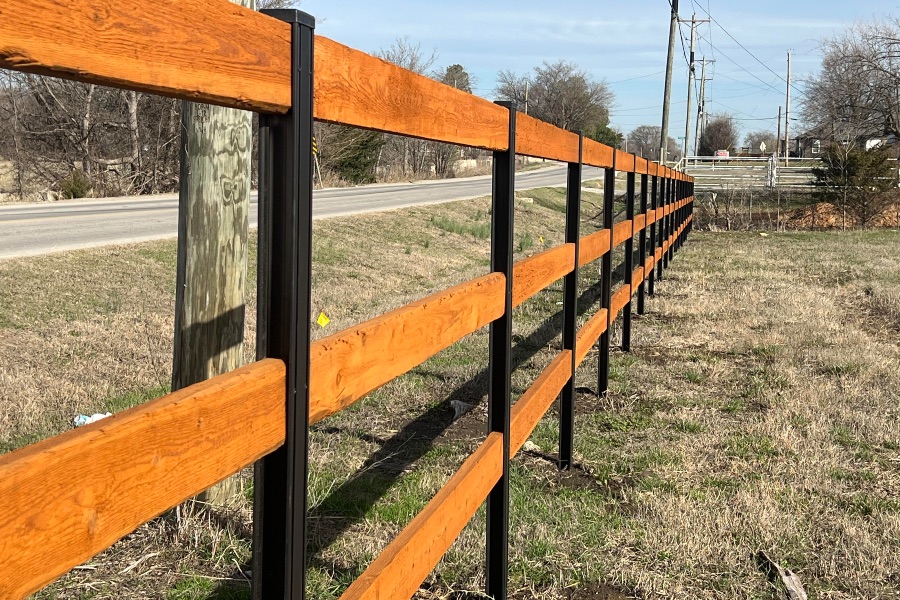All Categories
Featured

Your fencing is an important part of your residential property, supplying curb, protection, and personal privacy appeal. There are several techniques you can carry out to secure your fencing and extend its life.
- Pick the Right Product. The very first step in safeguarding your fence from weather-related damage is to select the appropriate material for your environment. Some products are extra immune to the components than others.
Wood Fencings: While traditional wooden fences offer an all-natural, eye-catching appearance, they are particularly susceptible to water rot, parasite, and damage infestation. Such as cedar or redwood if you choose wood, pick pressure-treated lumber or wood types that are a lot more immune to dampness. Vinyl Fences: Vinyl is a low-maintenance option that stands up to fading, fracturing, and bending. It's additionally immune to rot and insects, making it perfect for locations with high humidity or direct exposure to rainfall. Steel Fencings: Aluminum and wrought iron fences are durable and resistant to weathering. However, they can corrosion if revealed to moisture for extensive durations. Decide for a powder-coated or galvanized steel fencing to decrease the threat of rust. Compound Fences: These are made from a mix of timber fibers and plastic, supplying the very best of both globes-- sturdiness and a natural look. Composite fencings are immune to dampness, fading, and deteriorating, making them terrific for climates with regular rainfall or snow. 2. Apply Protective Coatings. No matter the material, applying a safety covering can assist guard your fence from climate damages.

Wood Fencings: A good-quality stain or sealant can assist shield your wood fence from moisture, UV rays, and insects. These finishings develop a barrier that protects against water from seeping into the timber and triggering rot. You must use a fresh coat of tarnish or sealer every pair of years, relying on your climate and the degree of direct exposure to rainfall and sunlight. Plastic Fences: Although vinyl fencings are usually resistant to weathering, they can still experience from staining as a result of the sunlight's UV rays. You can use specific vinyl cleaners or UV protectants to preserve the shade and look of your fencing. Metal Fences: For metal fencings, think about applying a rust-resistant guide and a layer of paint created for outside usage. Powder coating is one more excellent option for steel fences, as it develops a long lasting, weather-resistant finish that withstands rust and corrosion. 3. Regular Cleaning and Maintenance. Keeping your fence frequently is vital to avoiding damage from the components. Dust, leaves, and other particles can develop on your fence, which can trigger staining, mold and mildew, and mold with time.
Wooden Fences: Clean your wooden fence every 6 months with a mild cleaning agent option or a pressure washer (on a low setup) to eliminate dirt and crud. Watch out for early indications of rot, especially at the base of the fence articles where wetness often tends to build up. Plastic Fencings: Plastic fences are very easy to clean with soap and water. Utilize a mixture of vinegar and water to carefully scrub the impacted areas if you discover mold or mold. Stay clear of extreme chemicals that can harm the surface. Metal Fencings: Routinely tidy metal fences with a soft cloth or sponge to eliminate rust-causing debris. For wrought iron fences, think about applying a rust-inhibiting item to avoid rust. 4. Proper Setup and Positioning. Appropriate installment of your fence can go a long way in securing it from weather-related damage. Ensure that your fence is firmly anchored which blog posts are established deep sufficient right into the ground to protect against shifting during hefty winds or tornados. Installing bracing at key factors can offer additional assistance. if your fencing is subject to heavy winds.
In addition, consider the positioning of your fence. When possible, plant bushes or trees purposefully around your fencing to offer some natural security from harsh winds, intense sunlight, or motoring rainfall. Be mindful not to plant too close to the fence, as roots can harm or shift blog posts over time.
- Address Storm Damage Rapidly. Storms, particularly those with high winds or hailstorm, can cause prompt damages to your fencing. After a tornado, check your fence for busted sections, leaning articles, or dropped debris. Dealing with damages swiftly can stop further problems down the line. If you see minor damages, such as little splits or loosened panels, fix them immediately to stop water from seeping in and causing much more comprehensive damages.
- Winterize Your Fence. Cold temperatures and ice can be especially harming to wooden fencings. To avoid this, make sure that the base of your fencing posts is raised and not resting in pooled water.
Verdict. Weather-related damages is an unavoidable component of having a fence, however with the best precautions and normal maintenance, you can substantially expand the life of your fencing. Choose durable materials matched for your environment, use protective coatings, tidy routinely, and make sure appropriate installation. With these actions, you can shield your fencing from the aspects and keep its look and functionality for many years to come.
Latest Posts
Uncover the Premier Auto Repair Offers in Montclare, Chicago
Published May 28, 25
1 min read
Improve Your Residential Property with Expenses Door Solution
Published May 23, 25
1 min read
Discover Reduce Expenses on Car Maintenance with Montclare Auto Repair’s Special Deals
Published May 18, 25
1 min read